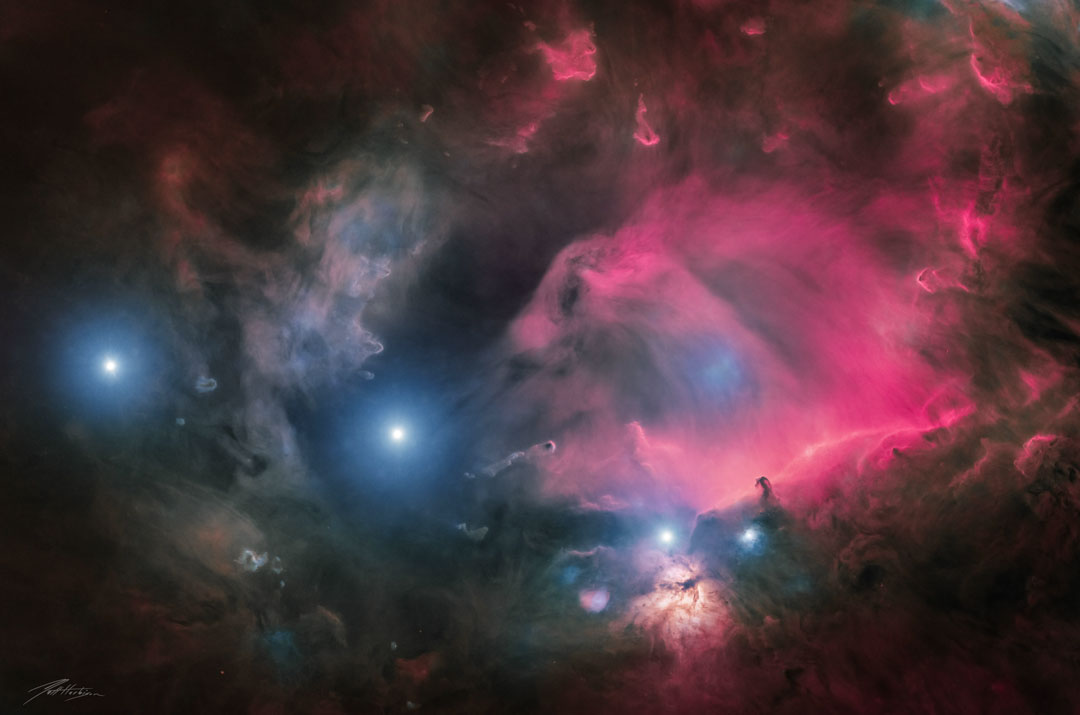2022年1月11日
Orion’s Belt Region in Gas and Dust
Image Credit & Copyright: Matt Harbison (Space4Everybody), Marathon Remote Imaging Observatory
Explanation: You may have seen Orion’s belt before — but not like this. The three bright stars across this image are, from left to right, Mintaka, Alnilam, and Alnitak: the iconic belt stars of Orion. The rest of the stars in the frame have been digitally removed to highlight the surrounding clouds of glowing gas and dark dust. Some of these clouds have intriguing shapes, including the Horsehead and Flame Nebulas, both near Alnitak on the lower right. This deep image, taken last month from the Marathon Skypark and Observatory in Marathon, Texas, USA, spans about 5 degrees, required about 20 hours of exposure, and was processed to reveal the gas and dust that we would really see if we were much closer. The famous Orion Nebula is off to the upper right of this colorful field. The entire region lies only about 1,500 light-years distant and so is one of the closest and best studied star formation nurseries known.
Tonight: APOD editor to present the Best APOD Space Images of 2021
Tomorrow’s picture: comet close-up
猎户腰带区的气体和尘埃
影像提供与版权: Matt Harbison (Space4Everybody), Marathon Remote Imaging Observatory
说明: 你或许看过猎户腰带,但绝非是这种样貌。在这幅影像里,组成猎户座腰带的三颗亮星,从左到右分别是参宿三、参宿二和参宿一。视野里的其他恒星,已用数位技术加以移除,以突显此区域明亮的气体云和黝黑的尘埃云。在诸多的星云之中,形状较有趣的有位在参宿一右方及右下方的马头星云和火焰星云。这张跨幅5度的深空影像,是在上个月使用20小时的曝光时间摄于美国德州马拉松的马拉松暗空公园与天文台;影像后来经过数位处理,以模拟此区如果离我们非常近,我们应能见到的云气和尘埃。此外,著名的猎户大星云位在这片色彩缤纷星野的右上角外头。猎户座约1,500光年远、幅员辽阔的云气和尘埃区,是现知最邻近研究最透澈的恒星形成区。
今晚: APOD编辑将呈现2021年APOD最佳太空图片
明日的图片: comet close-up







